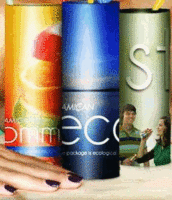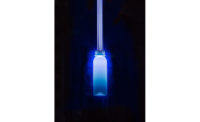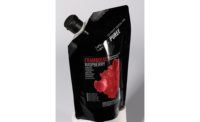The aseptic packaging market is picking up steam. Sector sales for the dairy industry will reach $24.6 billion globally by 2024, up from $14 billion in 2017, projects Transparency Market Research, an Albany, N.Y.-based market intelligence firm.
"Aseptic packaging finds extensive use in the food and beverage industry, and its popularity has spiraled on the back of the benefits it is offering to brands," the company states. “Packaging foods in a sterile condition prevents infections and leads to better preservation, which is especially important for dairy products that undergo rapid degradation."
Transparency Market Research adds that the "strides being made by the packaged dairy industry is a key factor in spurring the popularity of aseptic packaging and technologies. Rising consumption of yogurt, milk and cheese in urban regions of the world is a key underpinning to the demand."
Growing interest in processed foods with long shelf lives also is helping to drive aseptic packaging growth, reports New York-based Zion Market Research. The firm adds that increasing demand for aseptic cartons from the dairy and milk sectors will trigger additional activity, noting that "cartons offer such benefits as easy stacking of products; availability in various shapes and sizes; a longer shelf life and excellent barrier properties."
An arsenal to combat bacteria
During aseptic processing, operators package thermally sterilized liquid products into previously sterilized containers under sterile conditions to produce shelf-stable selections that do not need refrigeration. High temperatures are necessary to maintain freshness and prevent contamination by microorganisms, and products contain sealing systems that prevent reinfection.
Aseptic processing is replacing in-container sterilization of liquid foods, including milk, cream, yogurt and ice cream mix, and also is useful for dairy products such as cottage cheese that contain small discrete particles, reports Batavia, Ill.-based Eagle Flexible Packaging.
Aseptic packaging uses polyethylene as a barrier on the inner and outer sides to protect against moisture entering or exiting the container, along with a film foil to preserve products by keeping light and oxygen out, Eagle states, adding that packaging can extend the shelf life of many products by six to 12 months without refrigeration.
"The increased longevity of a product’s lifespan gives manufacturers more time to sell their products on retailers’ shelves and provides consumers with more time to use the product before it expires," Eagle reports.
Dairy processors often use aseptic cartons, plastic bottles, sachets, pouches and plastic cups, and leverage sterilization methods that include irradiation (including gamma rays, pulsed light, ultraviolet lasers or plasma); heat (which could encompass either steam or dry heat); and chemical treatments (such as hydrogen peroxide or peroxyacetic acid).
A bevy of benefits
Such processes generate a host of advantages for operators, reports Goldstein Market Intelligence, a New York-based research firm.
"Aseptic packaging not only extends the shelf life of products while maintaining food safety, but also saves energy and provides monetary benefits to companies by reducing the need for refrigeration during storage and deliverance of products," the company states.
Goldstein Market Intelligence adds that aseptic systems are “gaining immense popularity among manufacturers as aseptic packaging provides a sterile environment for products and prevents contamination by microorganisms. Rising consumer interest towards natural food and beverage products also are increasing the adoption of aseptic packaging for dairy products and ready-to-drink beverages."
Extending the shelf life of dairy selections gives processors the opportunity to widen their marketing area and target new distribution channels, says Fabienne Cheriaux-Huet, marketing manager, dairy, food and beverages, for Serac, a La Ferté-Bernard, France-based supplier of aseptic packaging lines for ultra-high-temperature milk in bottles.
She notes that extended shelf life also is an economic and environmental benefit for both retailers and consumers, as it helps reduce food waste and eliminates the need for refrigeration during the transportation and storage of dairy products. The latter reality significantly reduces logistic costs and the environmental footprint.
"Aseptic packaging without preservatives provides a higher level of food safety," Cheriaux-Huet adds. "That is important as consumer security and brand image cannot be put at risk."
Serac is marketing its packaging and filling BluStream technology. The technology is intended to sterilize caps without the use of chemical and high temperatures, which the company says can distort the caps. It works via a low-energy e-beam that can be administered at room temperature.
Take advantage of the technologies
The hygienic nature of aseptic packaging machines also is a key element for extending the shelf life of dairy products, says Markus Schlumberger, sales director at Ampack GmbH. Ampack is a unit of Syntegon Technology GmbH, a Waiblingen, Germany-based process and packaging technology provider and formerly the packaging division of the Bosch Group.
"As food safety regulations continue to strengthen, the demands for the hygienic design of filling and packaging machinery are rising as well," Schlumberger says, noting that such technologies will help prevent product recalls while also simplifying cleaning, minimizing downtime and reducing product and material waste.
Use of the filling and packaging machines also enhances energy savings by regaining 80% of utilized energy from heat exchangers, Schlumberger says.
"Additionally, aseptic filling allows North American food producers to expand their business to emerging markets like Asia, where the consumption of dairy products such as yogurts is steadily growing and offers significant sales benefits," he says.
Schlumberger notes that dairy processors can help pinpoint the packaging that is most appropriate for their specific products and operations by answering a host of questions. They include: Does the filling work smoothly? Are sterile conditions maintained? Does the sealing quality meet our expectations? What is the preferred dosing pattern and outcome?
Overcome the impediments
The equipment for aseptic processing and packaging is typically more expensive than conventional technologies — and processors must build a "clean room" to house the packaging operation. But perhaps the biggest operational challenge is changing the culture in dairy plants so workers are aware of how the systems operate and the operating procedures necessary for success, says Ray Carroll, director, regulatory and aseptic packaging technology for Fres-co Systems USA Inc., a Telford, Pa.-based flexible packaging supplier.
"This challenge can be met by choosing the right personnel, along with having a top-down commitment to best practices and training," he says.
Aseptic solutions also are more technical than conventional processes and require a higher level of sterilization for the products and equipment, says Mai Doherty, senior operational marketing manager, U.S. and Canada for Tetra Pak, a Denton, Texas-based packaging supplier.
"Because the aseptic carton is relatively new in the U.S. compared to the rest of the world, it also can be difficult for brands to invest in the new format," she says. "While bottling systems have existed for a long time, new packaging requires investment in new capital equipment."
The benefits of aseptic processing and packaging, however, often outweigh the costs, Carroll says, noting that paybacks include the ability to ship and store products at ambient temperatures, as well as greater food safety since the products are more resilient to temperature abuse throughout the supply chain.
Doherty adds that brands could lower capital-investment expenses by contracting with co-packers and agrees that operators will likely generate more savings than costs when investing in aseptic packaging equipment. She notes that users are able to use cost-effective transportation and storage, and the longer product shelf life reduces food waste.
"The important nutritional elements of milk such as protein and calcium will not change during the shelf life, and the products' taste, texture and color [are] better preserved than with other packaging formats," Doherty says.
She adds that improvements in machine and production software, along with new sterilization methods, are bringing higher reliability to aseptic packaging.
"The packaging process must be 100% sterile, fully secured and documented," Doherty says.
Equipment enhancements are underway
To achieve optimal results from aseptic processing and packaging, it is important for dairy processors to understand the needs and requirements of their customers and consumers when developing solutions, Doherty says. That may lead to providing strong resealability if a package is intended to support multiple servings; making packages easier to open for older adults; targeting children by including a straw, offering smaller size containers to reduce spills, and making it more comfortable to hold; and following the serving size requirement for distribution in schools.
She says that suppliers are continually making improvements to aseptic systems for greater food safety. The new generation of aseptic production and packaging solutions will enable dairy producers to "get more output from less input" and develop packaging that is more sustainable because of minimal resource consumption and low product loss levels.
"We also anticipate further growth in the overall renewability of packaging by utilizing such items as plant-based plastics, which are growing in popularity and more readily available," Doherty says.
Among Tetra Pak's launches is its Tetra Evero carton bottle, which is an aseptic package that operators can store, ship and merchandise ambiently or chilled. It is intended to emphasize sustainability by being recyclable with a lighter weight; it consists of renewable wood fiber from Forest Stewardship Council-certified forests, the supplier reports.
Newer aseptic packaging designs also have better barrier properties to protect against the elements that can compromise shelf life, including oxygen, moisture and light. They also have more strength to ensure package integrity throughout the supply chain, Carroll says.
While aseptic processing and packaging are rapidly expanding and becoming more functional, suppliers and merchandisers still must find ways to contain operating expenses if they are to maximize revenues with the products and systems, analysts state.
Indeed, stakeholders in the aseptic packaging market have to grapple with a higher end-product cost, which is mainly due to the use of costly packaging equipment, Transparency Market Research reports.
"The industry is thus slow to adopt the packaging in cost-sensitive markets," the firm notes. "However, as prospective consumers become aware of the benefits of such packaging, market players will see broadening of avenues."







